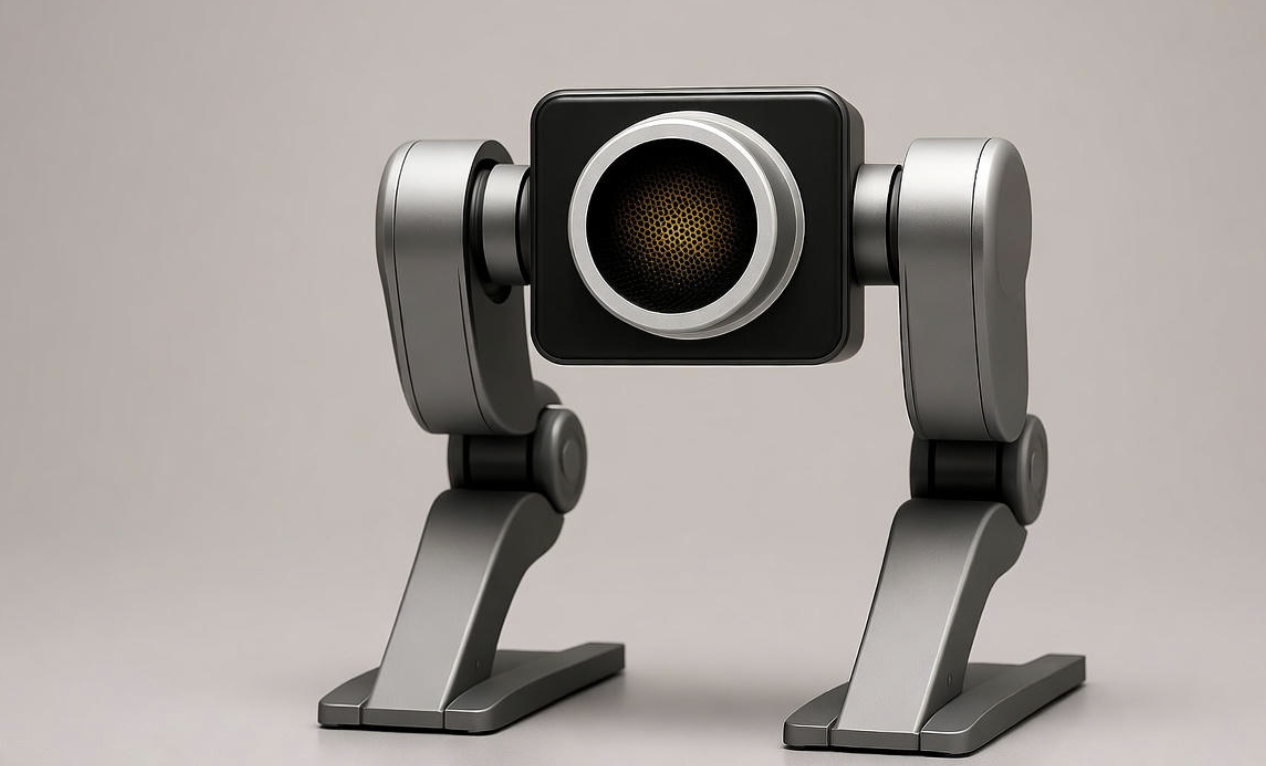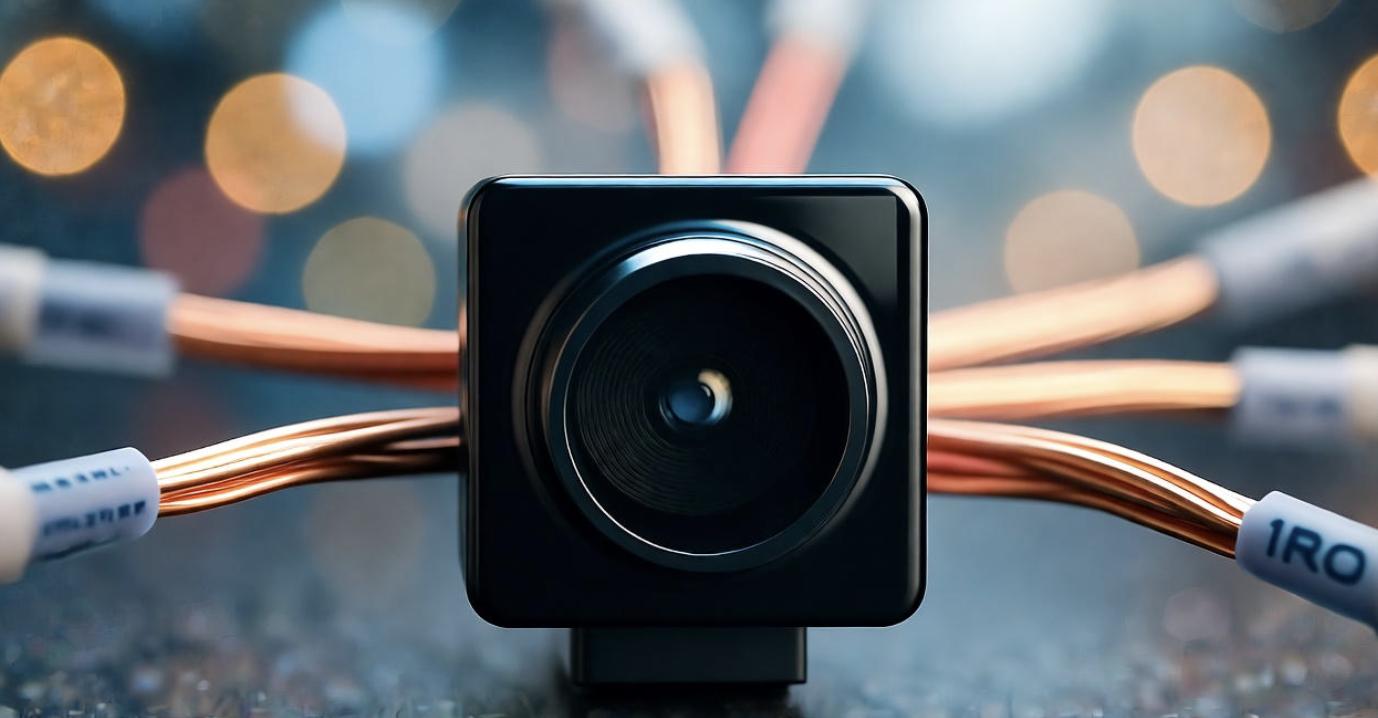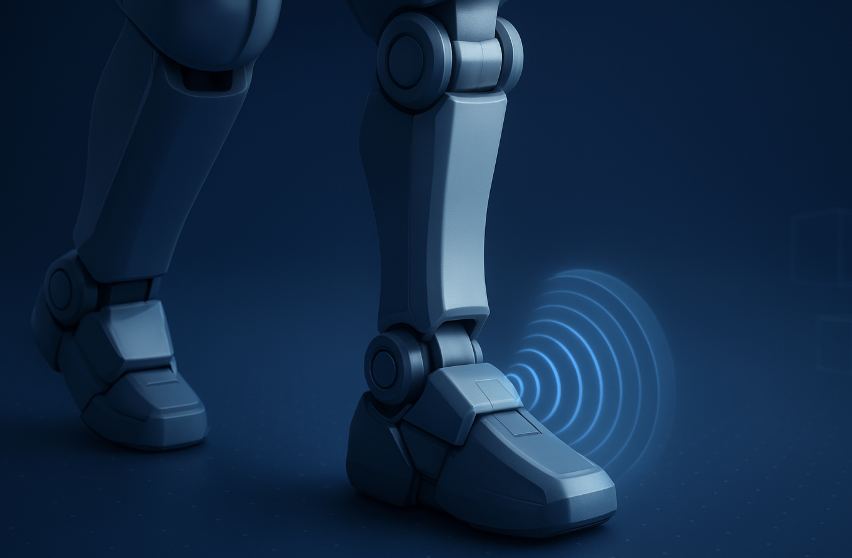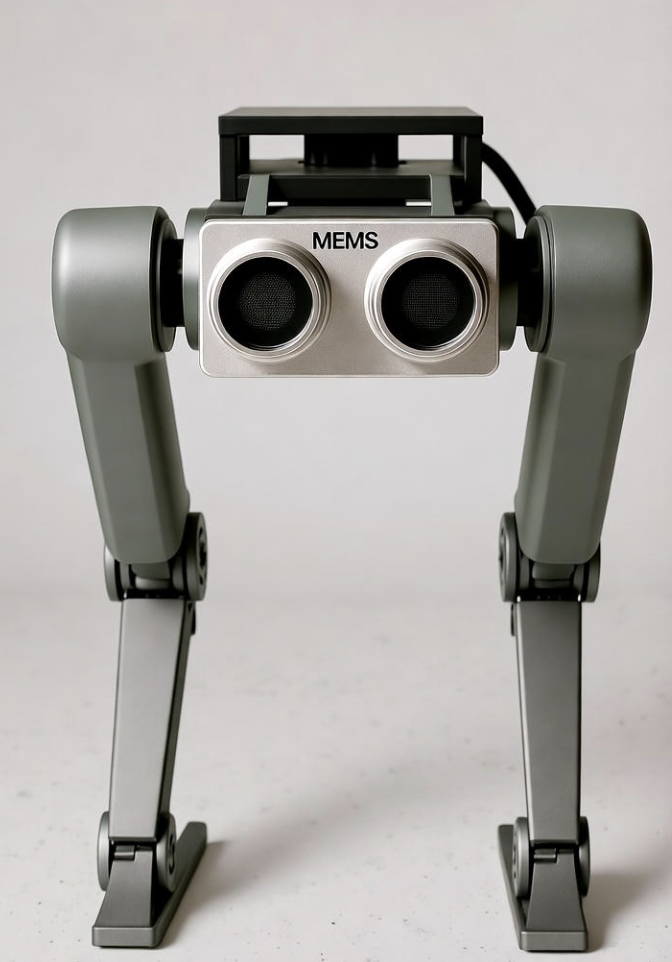


As biped robots move into increasingly complex environments, their perception systems must evolve to handle diverse terrains and dynamic obstacles.
Conventional narrow-field sensors often suffer from blind zones, limiting real-time obstacle detection.
This article focuses on 180° wide-field MEMS ultrasonic sensors, exploring their role in distance measurement and obstacle avoidance. It highlights their operating principles, integration benefits, and inherent limitations, emphasizing their value within a multi-sensor fusion architecture.

1. Technical Principles and Key Features
1.1 Operating Mechanism
MEMS ultrasonic sensors emit 40–60 kHz sound waves via piezoelectric transducers. Distance is measured using the Time-of-Flight (ToF) principle.
The 180° field of view (FOV) is achieved through acoustic lenses or micro-mirror arrays, forming a hemispherical detection zone.
1.2 Geometric Advantages of Wide FOV
During motion, biped robots encounter multi-directional obstacles and uneven surfaces.
A 180° sensor covers a 5–10 m radius sector—several times wider than traditional 15°–30° units—offering a richer environmental dataset and stronger predictive capability.

2. Core Functions in Biped Robots
2.1 Gait Planning and Ground Adaptation
By comparing sequential distance points, the sensor detects elevation changes and slope gradients:
Step Detection – identifies abrupt height differences;
Slope Estimation – reconstructs terrain gradients from echo time variance.
These insights allow adaptive gait control, preventing slips or missteps.
2.2 Dynamic Obstacle Avoidance and Path Replanning
In human-populated areas, a wide-FOV sensor enables:
Early Warning – detects side-approaching objects up to 500 ms earlier;
Motion Prediction – estimates obstacle trajectories via multi-frame point clouds.
Paired with SLAM or VFF algorithms, this supports real-time avoidance mapping.
2.3 Complementarity in Multi-Sensor Fusion
While ultrasonic sensors have limited spatial resolution, they excel where optics and LiDAR fall short:
Detection of transparent or reflective materials;
Resistance to fog, dust, and lighting variations;
Low power consumption (< 1 W) ideal for mobile robots.

3. System Implementation and Challenges
3.1 Density–Resolution Tradeoff
Wide FOV disperses energy across larger areas; this can be mitigated by:
Chirp-coded transmission for higher SNR;
Adaptive beamforming to focus on regions of interest.
3.2 Environmental Error Compensation
Temperature-induced speed variation (c = 331.5 + 0.6T m/s) and mirror reflections cause inaccuracies.
Solutions include:
Onboard temperature calibration;
Confidence-weighted filtering for reflection-prone zones.
4. Conclusion
With their panoramic coverage and high robustness, 180° MEMS ultrasonic sensors form an essential layer of environmental perception in biped robots.
Their contributions to step recognition, obstacle prediction, and terrain adaptation make them indispensable for intelligent navigation.
Future advancements will focus on:
Cross-band integration with millimeter-wave radar;
AI-driven multimodal calibration;
3D acoustic field reconstruction for complex terrain learning.
These innovations will drive biped robots toward safer, more energy-efficient, and fully autonomous mobility.
